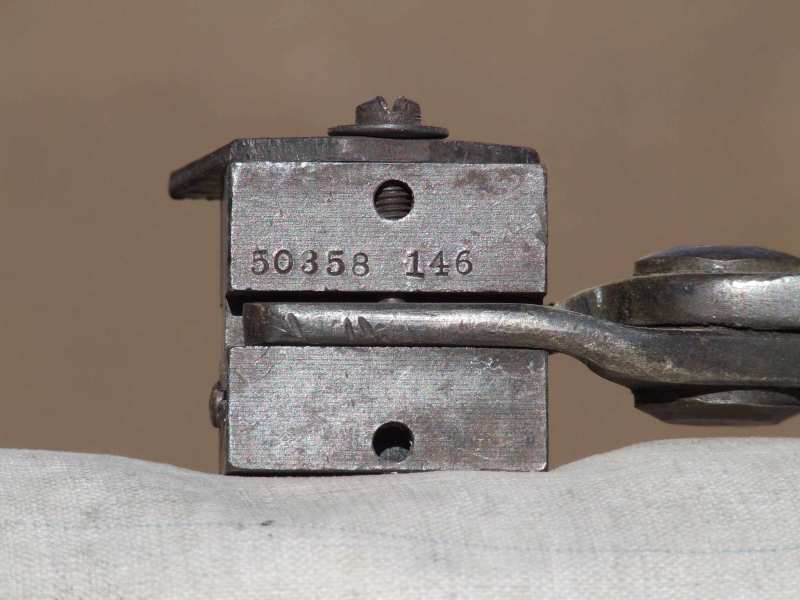
12.09.2006... An unusual four cavity Geo. A. Hensley mold from the depression (1930ís) era. Photos are courtesy of Rob Patelke, Seligman, AZ and were recently emailed to me.
Itís a two cavity block that was returned to George post manufacture and cut for additional cavities. The lack of the later style vent lines (closely machined horizontal) is an indication to me that the mold was made between 1936 and 1940. By 1940, George was adding machined vent lines to #50 to combat a fill out problem at the leading edge of the wadcutter.
I emailed Wayne Gibbs in November 2006 about this mold and here is his response:
Tom-
This looks to be an original mold. #50 plain base on top, maybe #36 on the bottom, if I recall correctly (note by me: The bottom mold is actually #53, I didnít get the photo with the mold numbers until after I had emailed Wayne). I seem to remember hearing about or seeing some of these blocks cut top and bottom. George may have cut the bottom cavities later, as an "add-on". These were the depression years, of course. The obvious problem with this idea is that the bottom of the block gets slid around, and is subject to damage. Does the mold have numbers on it, and do they look to be struck with the same set of stamps? That should tell if it was done by George.
Another point of interest is the very light vent lines. We soon learned that especially #50 demanded heavier vent lines to fill out the "front" driving band, at the front edge. My dad always thought it had something to do with the button nose and the way the alloy swirled around in this area when filling the cavity. #244 with no button nose yet otherwise identical to #50 didn't have anywhere near this problem. But #50 was bar none our most popular .38 target bullet so that was just the way it was. #36 would fill out better, but didn't seem to have the accuracy for as many folks. Notice how someone has cut cross-vent lines to help the situation. Our last venting pattern proved to be the best by far. (More vent lines closer together, with vertical crossvents so air has the shortest way to go before it can escape). Take care, have a good Christmas Season.--Wayne
End of email from Wayne
My comments continued: This is the first time I have seen this type of mold, where a two cavity block was cut for 4 cavities. Itís certainly an unusual variation, and an interesting addition to the lore of Hensley & Gibbs.
Here are the photos:




Back to the Hensley & Gibbs Mold Webpage